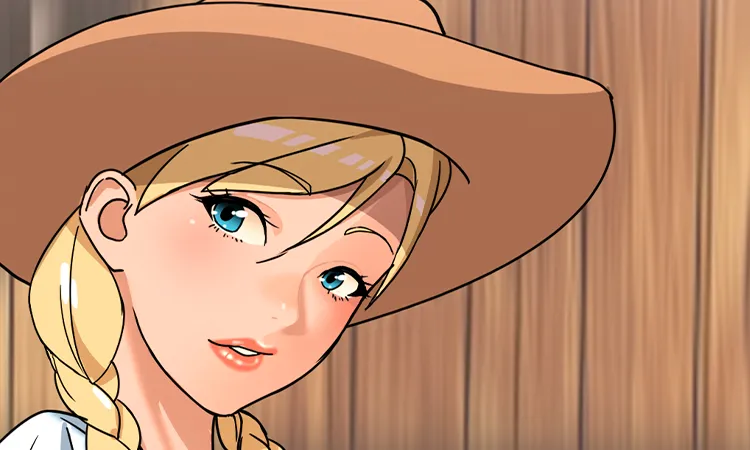Exploring The Idea Of Teach Me Forst: A Look At Learning And Guidance Today
The idea of "teach me forst" is something many people are talking about right now, and it really gets to the heart of how we learn and share knowledge with each other. This concept, you know, it’s often spoken of as "teach me first, Free," which suggests a very open way for people to find new things and enjoy stories that truly captivate them, all in a manner that is quite accessible. It is, in some respects, a way to experience learning without a lot of the usual obstacles, which is pretty compelling.
It's more than just sitting down and taking in facts; it's also about a bigger process, actually. This whole notion of "teach me first!" isn't just about absorbing information, no, it is also very much about the journey of becoming someone who can then, you know, guide others in their own learning paths. It brings to mind the whole big picture of education, and that is a pretty important aspect of what this concept means, really.
You might be wondering what this means for you, or perhaps how you can experience it. Well, it is a guiding light for anyone involved in sharing knowledge or picking up new abilities, so it's relevant to many different situations, actually. This approach, "teach me first," isn't just about what gets taught; it is also very much about the foundational aspects of learning itself, and that is a pretty important point to consider, you know, for anyone looking to make a real difference.
Table of Contents
- Understanding the Teach Me Forst Concept
- The Dual Purpose of Teach Me Forst: Learning and Guiding
- Stories and Learning: How Teach Me Forst Engages
- Free Access and the Honeytoon Approach
- Educational Resources and Specific Platforms
- The Impact of Quality Initial Education and Mentorship
- Frequently Asked Questions About Teach Me Forst
- The Call to Action with Teach Me Forst
Understanding the Teach Me Forst Concept
The core idea, you know, this concept that many people refer to as "teach me forst," often comes with the added idea of it being "Free," which is pretty interesting, actually. It really seems to provide a clear path for individuals to go out and look at new things, things they might not have considered before, you know. And, it's not just about finding new information; it also gives people a chance to really enjoy captivating tales, stories that truly grab your attention and hold it, all without a lot of fuss.
This whole process, so to speak, is presented in a very open way, meaning it's not hidden behind a lot of barriers, which is nice. It's also quite accessible, making it easy for many different people to get involved and experience what it has to offer, which, I mean, is a pretty important aspect of learning for everyone, right? This openness, you see, is a big part of what makes the "teach me forst" approach so appealing to many people today, giving everyone a chance to learn something new.
In essence, this concept, you could say, is a guiding light for anyone involved in sharing knowledge or picking up new abilities. It really helps to show the way for those who are teaching, and for those who are learning, providing a framework that is, well, pretty straightforward. The very meaning of "teach," at its heart, is to cause someone to know something, and this idea of "teach me forst" really focuses on that fundamental act of imparting knowledge, which is quite simple, yet powerful, in a way.
It's about making that initial connection, that first step in knowing, very clear and very direct. So, when we talk about "teach me forst," we are basically talking about an approach that prioritizes that initial moment of understanding, ensuring that the foundations are laid well, which is, you know, very important for anything that comes after it. This makes it a really practical idea for anyone who wants to learn or teach effectively, offering a clear path forward, as a matter of fact.
The Dual Purpose of Teach Me Forst: Learning and Guiding
This idea of "teach me first!" isn't just about absorbing information, no, it is also very much about the journey of becoming someone who can then, you know, guide others in their own learning paths. It brings to mind the whole big picture of education, and that is a pretty important aspect of what this concept means, really. It’s about a cycle, in a way, where you learn, and then you use what you have learned to help others along, which is a rather beautiful thing, actually.
The focus here is not just on what gets taught, but on the transformation that happens within the learner. You are not just filling your mind with facts; you are, in some respects, building yourself into a person who possesses knowledge and can then share that knowledge with others. This process, you see, it really speaks to the enduring power of quality initial education and mentorship, because that first instruction, that first bit of guidance, it truly sets the stage for so much more, which is quite significant.
It reminds us that for any significant learning or growth to occur, a strong beginning is often needed. That initial push, that foundational understanding, it is absolutely essential for everything else that follows, and that is a pretty clear point, I mean. Whether you are passionate about shaping young minds, influencing the next generation, or just helping someone grasp a new idea, this dual purpose of "teach me forst" comes into play, offering a path for both personal development and community contribution, which is, well, very meaningful.
New York City students, for example, have endless potential, and great teachers, you know, they really add the spark that helps that potential shine. This is where the guiding part of "teach me forst" becomes so important. It is about creating those sparks, those moments of clarity, that help individuals move from just learning to actually being able to teach and inspire others, which is, basically, the ultimate goal of a truly effective education system, right?
Stories and Learning: How Teach Me Forst Engages
One of the really compelling aspects of "teach me forst" is how it uses stories to help people learn, which is, you know, a very natural way for humans to take in information. The concept seems to delve into complex family dynamics, which can make a story really rich and relatable for many people, actually. When you hear about characters facing challenges that feel real, it helps you connect with the lessons they are learning, which is pretty powerful.
People often ask how this approach balances storytelling with its educational elements, and that is a pretty good question, I mean. It’s about weaving the learning into the narrative, so you are not just being lectured; you are experiencing the lessons through the lives of the characters. For example, there's mention of a turbulent story of two opposite high school students helping each other through life, and that kind of tale, you know, it can teach a lot about cooperation and understanding, all while being very engaging.
This method also includes things like comic images and photos for educational projects and activities, which is a great way to make learning more visual and, well, more fun for a lot of people. When you can see what is being talked about, it often makes the information stick better, and that is just a basic truth about how our brains work, you know. These visuals can bring stories to life and make complex ideas a bit easier to grasp, which is a huge benefit for learners of all ages, actually.
So, the stories are not just for entertainment; they are, in a way, vehicles for the educational content. They provide a context,

Honeytoon - "Teach Me First!"

Honeytoon - "Teach Me First!"

We are now working in partnership with Teach First! | Complete PE